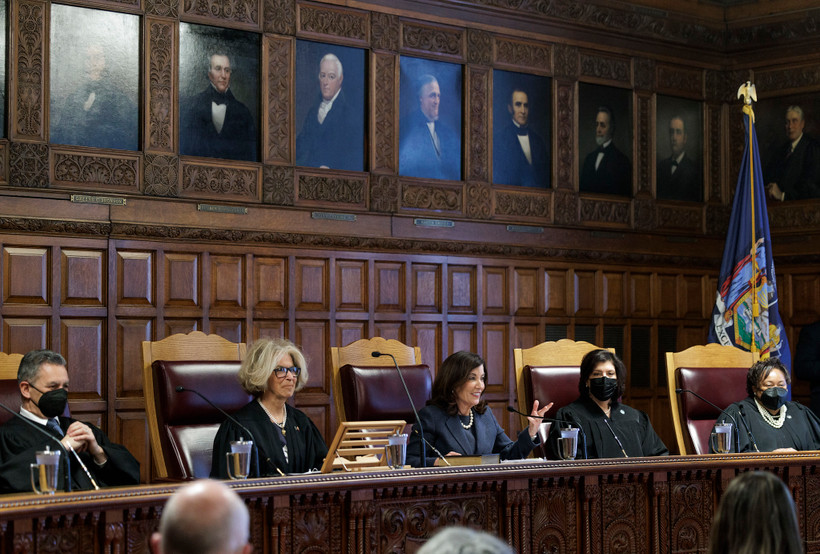New Chief Judge Shortlist Features Previously Excluded Liberal Judges
Hochul has a month to nominate one of the seven candidates to be New York’s next chief judge, after the state Senate rejected her first pick last month.

Hochul has a month to nominate one of the seven candidates to be New York’s next chief judge, after the state Senate rejected her first pick last month.

BEFORE YOU GO, consider: If not for the article you just read, would the information in it be public?
Or would it remain hidden — buried within the confines of New York’s sprawling criminal-legal apparatus?
I started working at New York Focus in 2022, not long after the outlet launched. Since that time, our reporters and editors have been vigorously scrutinizing every facet of the Empire State’s criminal justice institutions, investigating power players and the impact of policy on state prisons, county jails, and local police and courts — always with an eye toward what it means for people involved in the system.
That system works hard to make those people invisible, and it shields those at the top from scrutiny. And without rigorous, resource-intensive journalism, it would all operate with significantly more impunity.
Only a handful of journalists do this type of work in New York. In the last decades, the number of local news outlets in the state has nearly halved, making our coverage all the more critical. Our criminal justice reporting has been cited in lawsuits, spurred legislation, and led to the rescission of statewide policies. With your help, we can continue to do this work, and go even deeper: We have endless ideas for more ambitious projects and harder hitting investigations. But we need your help.
As a small, nonprofit outlet, we rely on our readers to support our journalism. If you’re able, please consider supporting us with a one-time or monthly gift. We so appreciate your help.
Here’s to a more just, more transparent New York.


Officers recorded over 25,000 stops last year, a 50 percent increase over the previous year. Nine in 10 people stopped by the NYPD last year were Black or Latino.
They want to beef up the powerful but little-known State Commission of Correction.
Nantwi’s cellmate, the only incarcerated witness in the room as guards allegedly killed the 22-year-old, speaks out for the first time.
New York law mandates gender-affirming care — but some hospitals are backing down anyway.
Environmentalists have long charged that New York is falling short of its climate mandates. Now, they’re taking the state to court.
Mental health providers are scrambling to prevent mass layoffs and program closures, leaving advocates urging state leaders to step in before it’s too late.